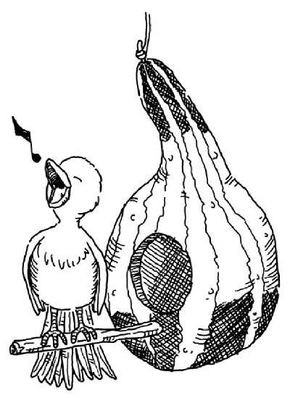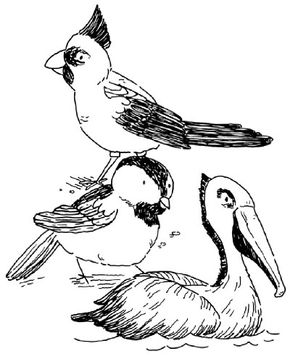Bird-watching projects for kids bring kids in touch with birds -- one of the most common creatures in nature. In fact, bird-watching has become a very popular hobby in the United States and around the world. Many organizations, such as the National Audubon Society, exist to promote birds and bird-watching.
So for all you bird lovers out there, here are some bird-watching projects that will help you join the millions of people already engaging in this fun activity.
Advertisement
Check out these projects and activities to learn more about the fascinating world of birds. Whether you are new to bird-watching or a seasoned birding veteran, you're sure to find a great bird-watching project in this article.
For great bird-watching projects and activities, check out these links:
Bird Behaviorist Bird-Watching Project
Because birds are active during the day, they make terrific subjects for studies of behavior. See how much you can learn from birds with this bird-watching project.
Bird Journal Bird-Watching Project
Most bird-watchers keep track of the birds they have seen. You can start your own record with this bird-watching journal project.
Bird Track Tracing Bird-Watching Project
Make an impression -- learn how to capture bird tracks in this great project.
A Day in the Life Bird-Watching Project
Learn about the daily habits and traits of birds with this bird-watching project.
Birdcall Bird-Watching Project
This fun bird-watching project will help you learn to identify and imitate bird calls.
Egg-sploration Bird-Watching Project
When the nesting season is over, you can go on an "egg-sploration" of your own with this "egg-citing" project.
Bird Feather Bird-Watching Project
This bird-watching project will show you what to do the next time you find a feather outside.
Favorite Foods Bird-Watching Project
Do birds really "eat like birds?" Find out what these animals munch on to fill their little bellies, and learn about birds' diets with this bird-watching project.
Get Close Bird-Watching Project
Can birds learn to trust humans in their world? Find out when you do this up-close-and-personal bird-watching project.
Bird 'Collection' Bird-Watching Project
Seasoned bird-watchers keep a "life list" of every bird they have seen. Make your own life list with this project.
Speedy Tweety Bird-Watching Project
Which are faster, smaller birds or larger birds? This project will help you find out.
State Birds Bird-Watching Project
You may know your state capital, but do you know your state bird? You will after doing this bird-watching project.
Beak-Watching Bird-Watching Project
This project will help you identify birds by their beaks and their feet.
Bird Migration Bird-Watching Project
See which birds pass over your neighborhood with this bird-watching project.
Bird Talk Bird-Watching Project
Birds only use chirps and tweets to communicate. See if you can do the same with this fun bird-watching project.
Sapsuckers and Woodpeckers Bird-Watching Project
This bird-watching project will help you learn the difference between sapsuckers and woodpeckers.
Tweet Repeat Bird-Watching Project
All you need is a tape recorder and some practice to learn how to speak bird with this bird-watching project.
Watch the Birdie Bird-Watching Project
Discover which birds live near your house with this interesting and easy bird-watching project.
Continue to the next page to find out if your neighborhood fowl are on their best "behavior."
For more fun crafts and bird-watching activities, check out:
Advertisement



